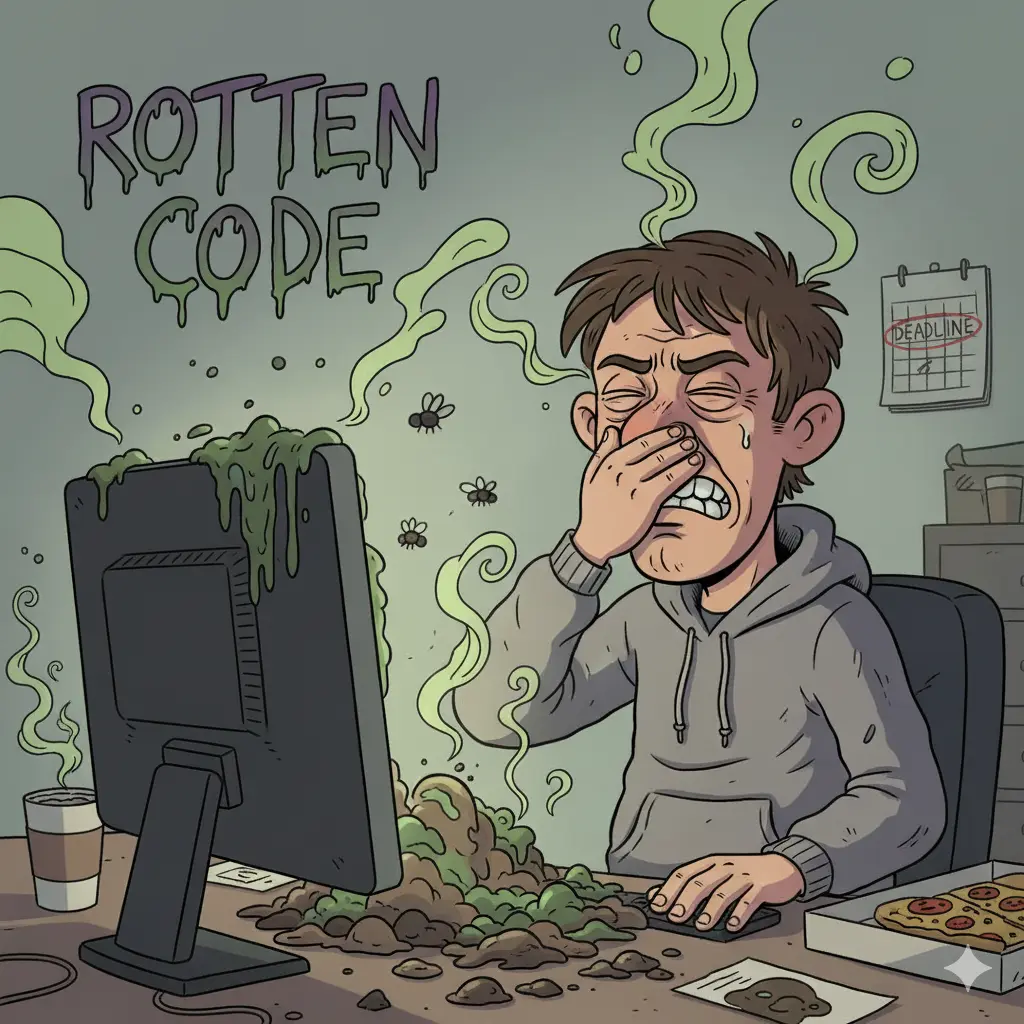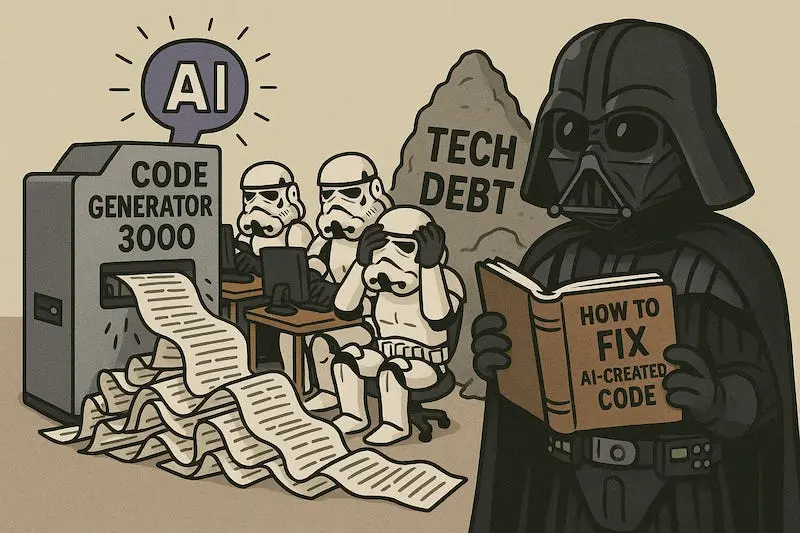
Comprehension Debt: The Architectural Time Bomb in Your AI-Generated Codebase
As LLMs spew unread code into production, teams face a new kind of technical debt where systems work but no human understands them.
The productivity numbers look incredible. Your team is shipping features faster than ever, thanks to AI coding assistants generating hundreds of lines per hour. But there’s a silent crisis building in your codebase, one that doesn’t show up in velocity metrics but will eventually cripple your ability to maintain and evolve your systems.
Welcome to comprehension debt: the accumulating cost of understanding code that nobody wrote but everyone must now maintain.
The Ghost in the Machine: When Code Has No Author
The fundamental problem with AI-generated code isn’t that it’s bad, it’s that it has no author. As Codemanship’s analysis ↗ points out, when teams produce code faster than they can understand it, they create a comprehension deficit that compounds over time.
This isn’t just theoretical. Consider the experience of Go experts who’ve been grappling with this reality. As one programmer bluntly stated, “I don’t want to maintain code that the AI generates, because it’s mostly not good” ↗. The issue isn’t necessarily quality, it’s ownership and understanding.
Why Comprehension Debt Is Different From Technical Debt
Traditional technical debt is a conscious trade-off: we cut corners today knowing we’ll pay interest later. Comprehension debt is different, it’s often unintentional and invisible until it’s too late.
Knowledge debt accumulates when engineers accept AI-suggested code they don’t fully understand. Six months later when that code breaks, there’s no institutional memory explaining why it was written that way. The AI doesn’t care if you understand its output, it just completes the request.
Consistency debt emerges when AI tools trained on public codebases generate inconsistent patterns across your system. You’ll get “user_id” in one file, “userid” in another, and “UID” elsewhere. As LeadDev notes ↗, “the codebase starts to look like it was written by five different teams”, creating onboarding nightmares and subtle integration bugs.
The Real-World Consequences: When AI Code Goes Wrong
The Firefly III case study reveals how comprehension debt manifests in production systems. When Qodo analyzed the open-source personal finance manager ↗, they discovered critical gaps that human reviewers had missed:
- Missing transaction handling: The financial application lacked proper database transaction handling altogether, no beginTransaction, commit, or rollback for important financial operations
- Silent failures: Currency conversion logic defaulted to 1 when exchange rates were invalid, leading to inaccurate financial records
- Race conditions: Budget checks lacked atomic validation, allowing overspending scenarios to slip through
These aren’t simple bugs, they’re architectural flaws that stem from nobody fully understanding the AI-generated codebase. The system worked well enough to pass basic tests, but the comprehension debt was silently accumulating.
The Scale Problem: When Velocity Creates Vulnerability
The most dangerous aspect of comprehension debt is how it scales. Traditional code review processes break down under the volume of AI-generated code. As GitClear’s analysis of 200M+ lines of code ↗ showed, there’s been a tenfold increase in duplication since AI adoption.
The math is simple but terrifying: if your team previously produced 1,000 lines of code per week with thorough review, and now produces 10,000 lines with superficial review, you’re accumulating comprehension debt ten times faster. The Stack Overflow 2025 survey ↗ found that 45% of developers spend more time debugging AI code than writing it from scratch.
Breaking the Cycle: Strategies for Managing Comprehension Debt
The solution isn’t abandoning AI tools, it’s adapting our processes to account for this new type of debt.
1. Treat AI as a Junior Engineer
The most effective approach is to treat LLMs as lightning-fast junior engineers who need supervision. This means:
- Plan before prompting: Force a planning stage where the AI outlines approaches before generating code
- Context curation: Provide AI tools with your architectural standards, coding conventions, and domain knowledge
- Structured review: Implement “golden files” that demonstrate your preferred patterns for the AI to learn from
2. Shift-Left Comprehension Checks
Comprehension debt is cheapest to address early. Tools like Qodo demonstrate how to catch understanding gaps before they reach production:
- Local development detection: Flag logical errors and architectural misalignments in the IDE
- Context-aware PR review: Analyze code against historical patterns and cross-repository dependencies
- One-click remediation: Automatically fix consistency issues and architectural violations
3. Measure What Matters
If you’re not tracking comprehension debt, you’re flying blind. Key indicators include:
- Review queue times: Spikes suggest verification debt is accumulating
- Code churn: High churn in AI-heavy modules indicates instability
- Incident frequency: AI-generated code breaking in production is a leading indicator
- Developer surveys: Track how confident engineers feel maintaining AI-generated sections
The Future of Software Ownership
The fundamental question comprehension debt raises is: who owns AI-generated code? If nobody understands it, who’s responsible when it fails? As one analysis puts it ↗, “The long-term maintainability of AI-generated codebases is still unknown.”
This isn’t just a technical problem, it’s an organizational one. The teams that succeed will be those that recognize comprehension debt as a first-class concern alongside technical debt. They’ll build processes that prioritize understanding over velocity, and they’ll measure success not by lines of code generated, but by systems maintained.
The AI coding revolution is here, but the reckoning with comprehension debt is just beginning. The question isn’t whether your team will face it, but whether you’ll see it coming in time to defuse the architectural time bomb ticking in your codebase.



